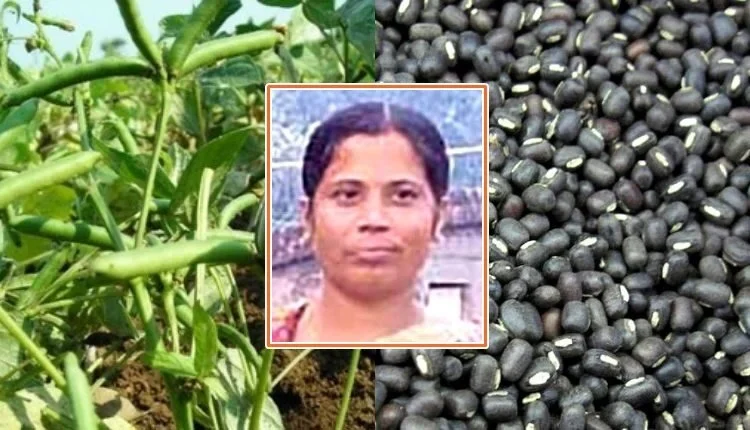Black Gram Cultivation: This woman adopted new technology in the cultivation of urad dal, achieved improved yield
The urge to do something new brought success
Black Gram Cultivation is mainly done in the plains of the country, Uttar Pradesh, Punjab, Haryana, Madhya Pradesh, West Bengal, Bihar and Rajasthan. Whereas urad dal is mostly consumed in South India as it is used as main ingredient for making Mendu Vada, Idli, Dosa etc. Urad is the main pulse crop and by doing its scientific cultivation, farmers can get more yield like Taapsee Patra of West Bengal is doing.
Who is Taapsee Patra?
Taapsee, a resident of Ruppur village in Birbhum district of West Bengal, is a progressive farmer of her area. Taapsee Patra participated in a skill development training program on Crop Diversification organized by Rathindra Krishi Vigyan Kendra in 2019-20. He then showed interest in cultivating pulses (urad dal) instead of paddy in the Kharif season. He encouraged other farmers to do the same. The name of the new and improved variety of urad dal displayed in the training program is WBU-109.
What is the specialty of WBU-109?
Before WBU-109 variety of Urad Dal, Taapsee and other farmers of the area used to cultivate Kali-50 variety of Urad. When the WBU-109 variety of Urad Dal was planted in the field as a trial, the farmers got the benefit of bumper yield in a short time. This variety matures 15 to 20 days earlier than Kali-50. Also it has 6 to 8 branches more. While each plant of Kali-50 has only 30-35 pods, the new variety has 60-65. The quality of WBU-109 is good, which gets it good price in the market.

New technology and sowing method
The farmers of Ruppur village traditionally used to produce Kali-50 variety of urad dal. They had no knowledge of the nutrients and pesticides required for growth of the crop. The farmers of this area did not use any manure and fertilizer. The scientists of Krishi Vigyan Kendra, Birbhum, told farmers about the new and advanced technology of cultivation of urad dal during training.
Spraying method was used in this new technique. This method is easy and takes less time. In this the field is first plowed. Then the seeds are sprinkled in the field by hand and after that, light plowing is done. The seeds are mixed with the soil and moved to the soil.
The improved variety of urad dal WBU-109 was used at the rate of 30 kg per hectare. After 1 to 3 days of sowing, three litres of herbicide pendimethalin drug per hectare was used to deal with the weed problem. After 25 to 45 days of sowing, for plant nutrients, two grams of B-20 drug per litre of water was sprayed on the plants.

Apart from WBU-109, some other improved varieties of urad dal are:
Pant U-19 – This variety gives yield up to 10-12 quintals per hectare.
Pant U 30 – This variety, which is ready in 75-80 days, gives about 10-12 quintals per hectare.
Krishna – This variety is suitable for heavy soil, gives yield of about 10-12 quintals per hectare.
Khargone – This variety, which is ready in about 80 days, gives yield up to 12-15 quintals per hectare.
T-9-19 – The grain of this variety is thick and black. Suitable for loamy soil, this variety gives about 9-13 quintals per hectare.
KU 96-3 – The grains of this variety of urad dal are small and black. It gives a yield of about 8-10 quintals per hectare.
Jawahar Urad 2 – The grain of this variety of urad dal is large and black and gives an average yield of up to 13 quintals per hectare.
Shekhar 2 – It is considered to be a very advanced variety of urad, with an average yield of 10-14 quintals per hectare.
Contact us: If farmers want to share information or experiences related to farming with us, then they can do this by calling us on the phone number 9599273766 or by writing an email to [email protected] or by sending your recording. Through Kisan of India, we will convey your message to the people, because we believe that if the farmers are advanced then the country is happy.
You can connect with Kisan of India on Facebook, Twitter, and Whatsapp and Subscribe to our YouTube channel.



